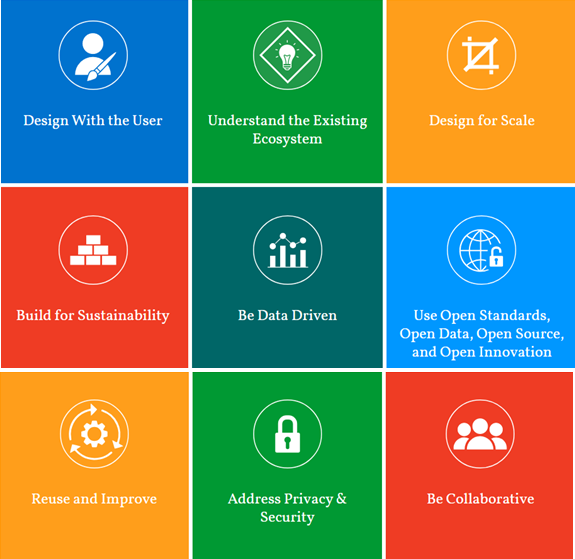Let us know what type of content you'd like to see more of. Fill out our three question survey.
Digital Development for Newbies, Part 1: The Basics
Sep 26, 2019
I joined DAI’s Center for Digital Acceleration (CDA) several months ago as an international development professional: familiar with ADS 302, Geo Code 937, Form AID 1420-17, among other industry acronyms, but a newcomer to the language of tech trends, digital buzzwords, and product design. I found the CDA team to be both inspiring and daunting, boasting individuals with unique expertise and passions—whether cybersecurity, human-centered design, remote sensing, blockchain, or the Internet of Things. As a neophyte, it’s easy to be overwhelmed by what you don’t know in the seemingly limitless world of digital technology but I’m here to help! If you, too, are new to this sphere, what do you need to know to integrate digital tools into your development programs or proposals? Below are some key points to get you started.
1. Digital is the New Normal
Digital technology is more integrated into our daily lives than we ever expected and sometimes even realize, continually transforming how we communicate, shop, access entertainment, and pay for things both online and in person. As our daily lives move ever closer to Jetsons-level technological integration, so too should our international development programming. Now, not every country or community interacts with technology in the same way—for example, Kenya’s flourishing digital ecosystem differs from Pakistan’s—so understanding context is critical (more on that below). But the potential applications for international development are truly limitless. Accept it. Embrace it. Contextualize it.
2. Digital Development Principles are Development Principles
While you or I may never understand the mathematics behind machine-learning algorithms or program a remote sensor for flood early warning detection, I have quickly come to understand that at its core, digital development is just that. Development. While the tools and their applications are ever-changing, the objectives and core principles are the same.

Source: https://digitalprinciples.org
The nine Principles for Digital Development (or 10, as my colleagues posit) represent not only best practices for technology-enabled programs, but arguably for all development programs. Let’s look at a few examples.
- Design with the user—DAI applies its Frontier Insights method to understand user preferences, capacities, access, and habits to ensure digital solutions are user-centered. This principle is also increasingly applied across development sectors, with more donor interest in a co-design or co-creation approach to program design. The U.S. Agency for International Development (USAID) has cited co-creation as an opportunity to “understand the root causes of the problem, grasp the intricacies of complex local systems, network… and work with multiple stakeholders to design an innovative solution and action plan.”
- Understanding the Existing Ecosystem—How many times have you seen a project whose scope of work is ungrounded in the realities of the community or intended beneficiaries? A successful approach copied and pasted from one location does not guarantee success in another. This principle is also integrated into the co-creation and user-centered design approaches mentioned above.
- Build for Sustainability—Too many projects do not have a sustainability plan after program funding ends. USAID’s emphasis on the Journey to Self-Reliance highlights the importance of supporting locally sustainable approaches to tackling development challenges. The digital development community learned the importance of this after a phase of “pilotitis” (a malady the community is working to prevent by adhering to yet another digital principle, Build for Scale).
3. Local Ownership is Key
A digital solution, like any solution, is most effective with local stakeholder engagement and ownership. So before integrating digital technology into your programming, first ask: Who are the local stakeholders that will benefit or be affected by this solution? Who are the leaders in the community, both formal and informal, that could facilitate or hinder its effectiveness? Identify these stakeholders, understand their needs, and bring them into the design and planning phase as early as possible. Then continue to consult with them throughout the design, development, and dissemination phases of the project.
These stakeholders will be key in:
- Helping you understand existing systems and processes, think through interoperability, and coordinate access to necessary data or coding
- Ground-truthing your assumptions
- Championing and facilitating the project from the inside (e.g. navigating government bureaucracies or community hierarchies)
- Planning for sustainability
- Advocating for the solution or tool’s use within the community
If your key stakeholders are engaged, feel heard, and own the final product, they will be critical assets to ensuring that your digital solution outlives the program’s financial and technical support.
Does this all sound familiar? It should. My key takeaway from Part 1: The Basics is that good digital development is good development. If the “development” foundation of the project is fractured—if there is no stakeholder engagement, if objectives aren’t aligned with the community’s needs, if there is no sustainability plan—don’t expect a digital silver bullet.
Stay tuned for Part 2 of this Digital Development for Newbies series.